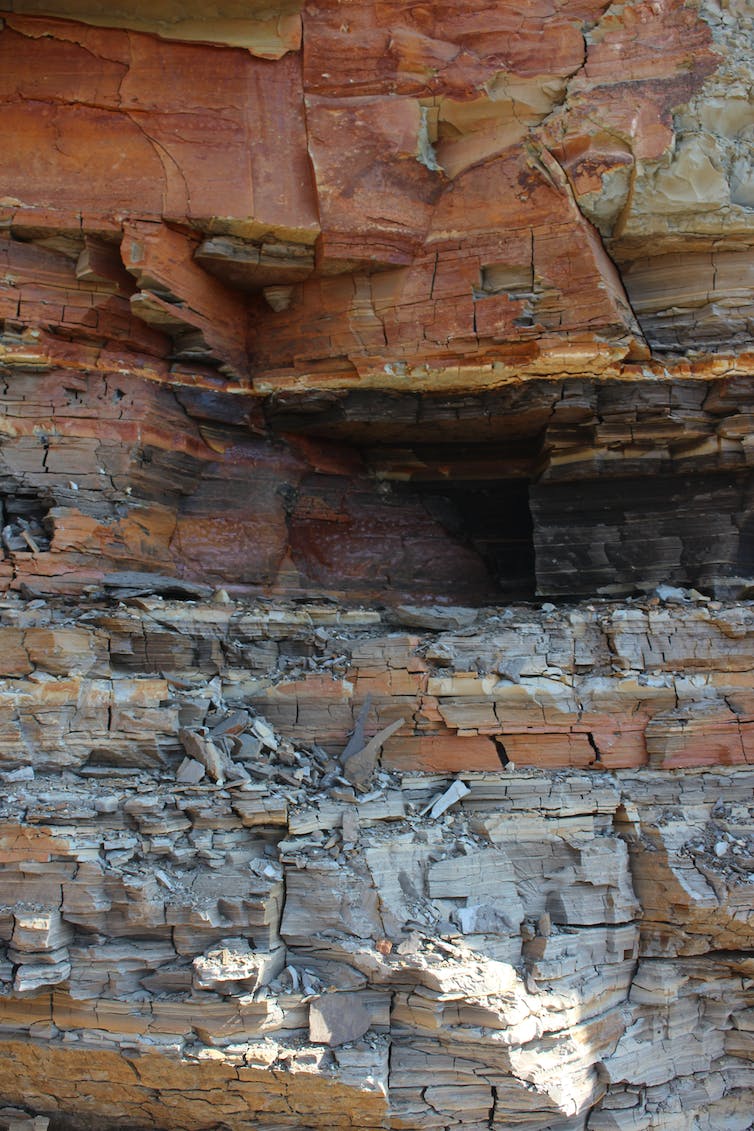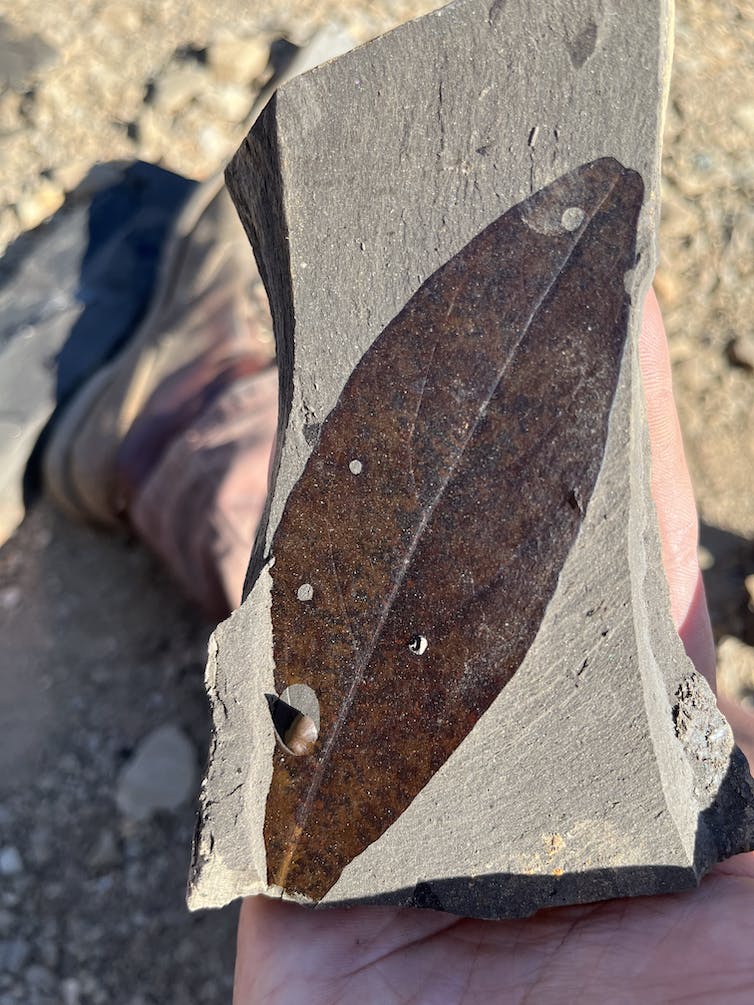Does life exist elsewhere in the universe? If so, how do scientists search for and identify it? Finding life beyond Earth is extremely difficult, partly because other planets are so far away and partly because we are not sure what to look for.
Yet, astrobiologists have learned a lot about how to find life in extraterrestrial environments, mainly by studying how and when the early Earth became livable.
While research teams at NASA are directly combing the surface of Mars for signs of life, our interdisciplinary research group is using a site here on Earth to approximate ancient environmental conditions on Mars.

A close-up view of the Clarkia site where you can see lacustrine clay and volcanic ash layers. This site represents Mars in our work.
Taylor Vahey
Contained within northern Idaho’s Clarkia Middle Miocene Fossil Site are sediments that preserve some of Earth’s most diverse biological marker molecules, or biomarkers. These are remains of past life that offer glimpses into Earth’s history.
An ancient lake
About 16 million years ago, a lava flow in what would one day become Clarkia, Idaho, dammed a local drainage system and created a deep lake in a narrow, steep-sided valley. Although the lake has since dried up, weathering, erosion and human activity have exposed sediments of the former lake bed.
For nearly five decades, research teams like ours – being led by Dr. Hong Yang and Dr. Qin Leng – have used fossil remains and biogeochemistry to reconstruct past environments of the Clarkia Miocene Lake region.
The lake’s depth created the perfect conditions for protecting microbial, plant and animal remains that fell to the lake’s bottom. In fact, the sediments are so well preserved that some of the fossilized leaves still show their autumn colors from when they sank into the water millions of years ago.

A fossil magnolia leaf showing fall (reddish) colors. This leaf likely fell off a tree in the fall once the trees paused photosynthesis for the winter and sank to the bottom of the lake, where it was buried. The leaf retained its fall coloring for 16 million years, though once being dug up and exposed to air, it quickly oxidized and lost its color.
Robert Patalano
Today, ancient lake beds on Earth are becoming important settings for learning about habitable environments on other planets.
Biological marker molecules
Clarkia’s lake sediments contain a suite of ancient biomarkers. These compounds, or classes of compounds, can reveal how organisms and their environments functioned in the past.
Since the discovery of the Clarkia fossil site in 1972, multiple research teams have used various cutting-edge technologies to analyze different biomarkers.
Some of those found at Clarkia include lignin, which is the structural support tissue of plants, lipids like fats and waxes, and possibly DNA and amino acids.
Understanding the origins,…


